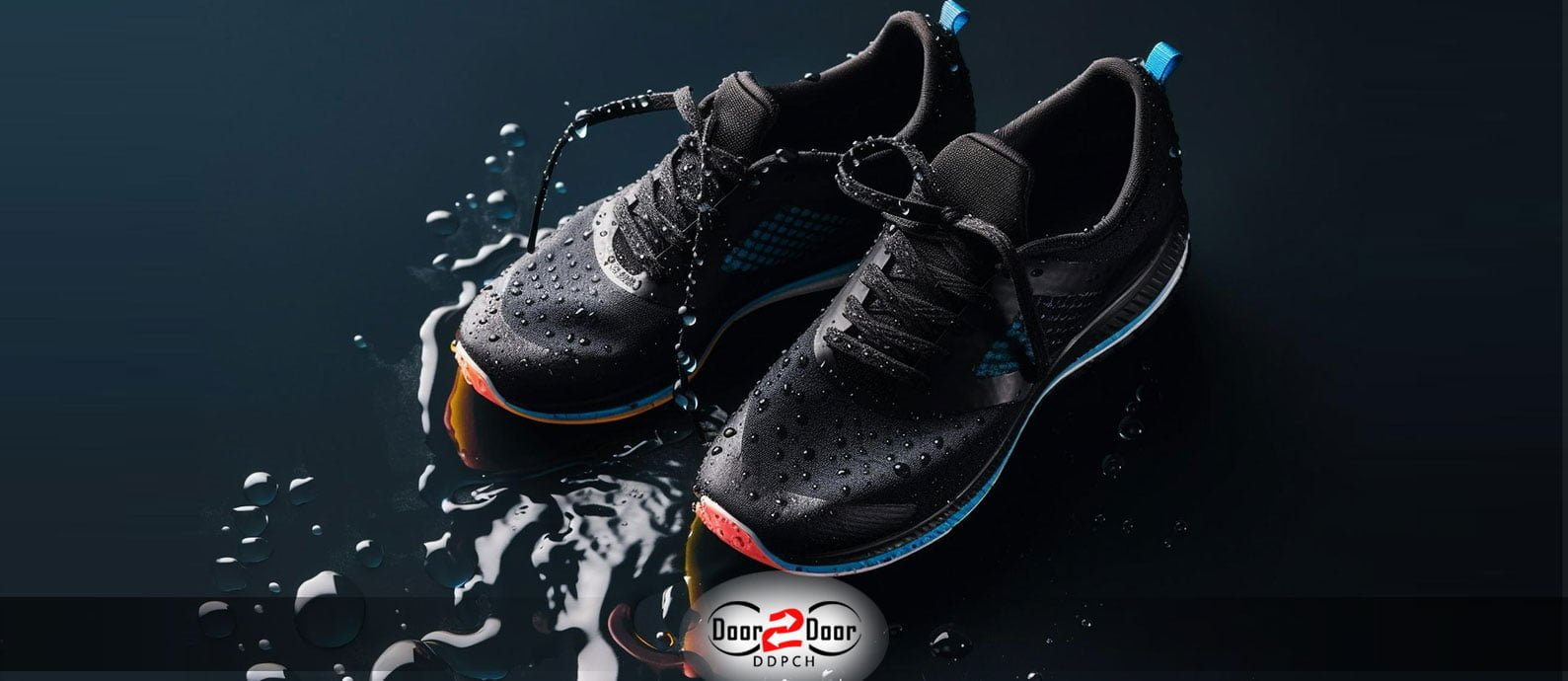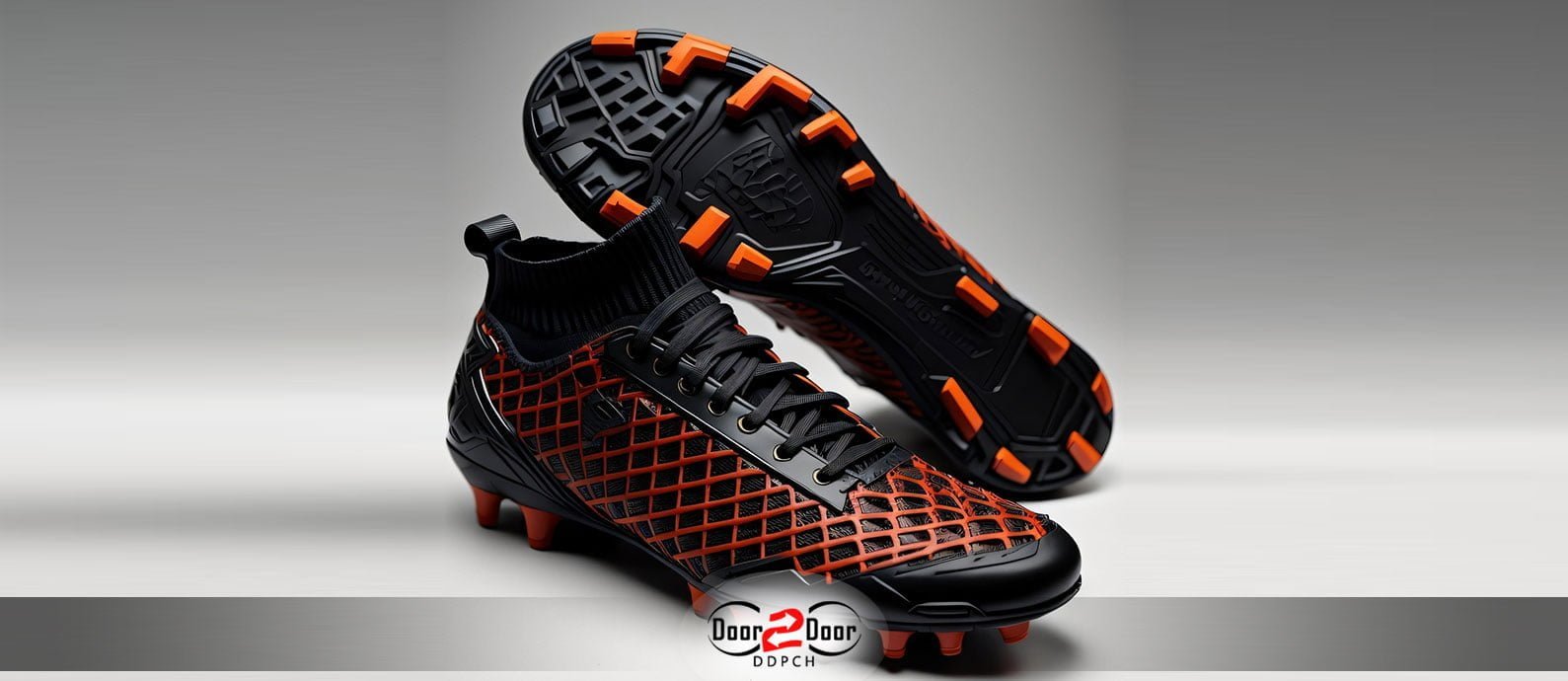Introduction
Navigating the intricate world of international shipping can be a daunting task, especially when dealing with valuable and often delicate items like shoes. From the sprawling factories of Guangzhou to the bustling ports of Shanghai, China stands tall as a global behemoth in shoe manufacturing. As businesses across the globe source their footwear from this East Asian powerhouse, understanding the intricacies of shipping becomes paramount. This guide aims to shed light on the various aspects of shipping shoes from China, ensuring your products not only arrive safely but also cost-effectively.
In today’s globalized economy, it’s essential to choose a shipping partner that understands the nuances of international logistics. DDPCH is one such company that has consistently showcased its expertise in this domain. With a robust portfolio of services, including air freight, sea freight, DDP (Delivered Duty Paid), and express shipments, DDPCH ensures that your shipping needs, regardless of scale or urgency, are met with professionalism and efficiency. Their end-to-end solutions guarantee that businesses can focus on what they do best, leaving the complexities of international shipping in capable hands.
Join us as we delve deeper into the world of shoe shipping, offering insights, tips, and comparisons to make your shipping experience seamless and effective.
Why Shipping Shoes from China?
Shipping shoes from China is a common practice for many businesses and individuals, and this decision is rooted in several compelling reasons. First and foremost, China has positioned itself as a manufacturing powerhouse over the past few decades, especially in the footwear sector. The sheer volume of shoe production in China means that they have achieved significant economies of scale. This vast scale of production results in lower costs for each pair produced, providing an economic advantage that few countries can rival.
Beyond just the economic perspective, China boasts a rich variety and versatility in footwear production. Whether you are looking for athletic sneakers, formal dress shoes, or any other niche styles, Chinese manufacturers have a wide array of offerings. This diversity in production caters to the diverse global market demands, making it easier for businesses to find a suitable supplier for their specific needs.
China’s rise in the manufacturing world isn’t just about quantity; it’s also about quality. With years of experience and technological integration, many Chinese factories have sophisticated manufacturing techniques. The advanced infrastructure and machinery ensure that shoes are not only produced efficiently but also meet the global quality standards that international buyers seek.
Another notable aspect of shipping shoes from China is the flexibility offered by manufacturers when it comes to customization and private labeling. As brands seek to differentiate themselves in the global market, having unique designs or even launching private label shoe brands becomes crucial. Chinese manufacturers, known for their adaptability, often cater to these specific design needs, providing a significant advantage for brands looking for bespoke solutions.
Lastly, the integrated supply chain in China plays a pivotal role. Every step of the shoe production process, from sourcing raw materials to the final packaging, is streamlined. This interconnectedness ensures a smoother production process, reducing potential hitches and ensuring timely shipments.
China's Role in Shipping Shoes Worldwide:
China’s role in the global footwear industry is undeniable. Serving as the world’s largest footwear producer and exporter, the nation has carved out a unique and dominant position. Estimates suggest that China is responsible for producing over 65% of the world’s footwear, a testament to its overwhelming influence in this sector.
This dominance doesn’t exist in a vacuum. China has nurtured and established robust trade relationships with countries worldwide. These partnerships, often fortified with international trade agreements and policies, facilitate the smooth export of footwear to major global markets, whether it’s North America, Europe, Africa, or elsewhere.
Supporting this export prowess is China’s unparalleled infrastructure and logistics network. Modern mega ports, expansive highways, and state-of-the-art warehousing systems ensure that shoes manufactured in China can be efficiently shipped worldwide with minimal delays.
But it’s not just about production and shipping. The Chinese government and industry bodies have been proactive in ensuring quality and consistency in the footwear sector. Regulatory frameworks have been put in place to maintain and often elevate the quality standards in the industry. Such regulations instill confidence in international buyers, ensuring them of the safety and quality of shoes sourced from China.
Furthermore, the Chinese footwear industry isn’t stagnant. There’s an ongoing effort towards innovation. Many shoe manufacturers are investing heavily in research and development, aiming to stay abreast of global design trends, technological advancements in shoe-making, and the ever-evolving demands of consumers worldwide. This commitment to innovation ensures China’s continued relevance and leadership in the global shoe market.

Benefits of Importing and Shipping Shoes from China
While the table provides a structured look into the advantages and drawbacks, it’s crucial to remember that individual experiences can vary. Due diligence, research, and building strong relationships with suppliers can mitigate many of the cons listed.
Potential Challenges When Shipping Shoes from China
Shipping shoes from China, while beneficial in many aspects, can present a range of challenges. Let’s delve into the potential issues businesses might face:
- Quality Inconsistencies: One of the most significant concerns when sourcing products from another country is quality assurance. While many Chinese manufacturers produce high-quality footwear, there are also those that might compromise on quality to offer a lower price. Without a robust quality check process, businesses might end up with a batch of shoes that doesn’t meet their standards or those of their customers.
- Language and Communication Barriers: Though many Chinese manufacturers and suppliers can communicate in English, nuances and specificities might get lost in translation. Miscommunications can lead to production errors, wrong shipments, or delays.
- Shipping Delays: Shipping internationally inherently carries the risk of delays. These can be due to factors like customs clearance, port congestion, or unforeseen disruptions like strikes or severe weather events.
- Regulatory and Customs Issues: Different countries have specific import regulations. If businesses aren’t familiar with these or don’t comply with them, their shipments can get held up at customs. This could involve extra fees, or in worst cases, confiscation of goods.
- Tariffs and Duties: Depending on trade relations and agreements, importing shoes from China can be subject to varying duties and tariffs. These additional costs can sometimes make importing less profitable than initially projected.
- Intellectual Property Concerns: There’s a potential risk of design copying or intellectual property theft. A unique shoe design shared with a manufacturer might end up getting replicated and sold to other buyers.
- Environmental and Ethical Concerns: There have been instances where manufacturers don’t adhere to environmental guidelines or employ unethical labor practices. Businesses need to be wary of these factors, both for ethical reasons and to maintain their brand reputation.
- Currency Fluctuations: Changes in the value of currencies can affect the cost of procurement. If a business agrees on a price in advance and there’s a significant currency fluctuation by the time of payment, they might end up paying more than they anticipated.
- Packaging Issues: Inadequate packaging can result in damage during transit. Shoes, especially those made of delicate materials or with intricate designs, need to be packaged properly to ensure they reach the buyer in pristine condition.
- Return and Refund Complications: If there are issues with a shipment, managing returns and getting refunds or replacements can be more complicated and costly when dealing with international suppliers compared to local ones.
To navigate these challenges, businesses should establish clear communication channels, conduct thorough research, and perhaps even consider hiring intermediaries or consultants familiar with the Chinese market and international shipping logistics.

Safety and Quality Checks for Shoes Imported from China
This table provides a structured guide for businesses to ensure comprehensive quality control when importing shoes from China.
Comparing Shipping Costs: Air Freight vs. Sea Freight for Shoes
When importing shoes, especially from major production hubs like China, businesses have two primary shipping options: air freight and sea freight. Both modes have their unique advantages and disadvantages, which directly impact costs, delivery time, and logistics planning. Here’s a direct comparison between the two, specifically tailored to shipping shoes:
Air Freight:
Advantages:
- Speed: Air freight is notably faster, making it ideal for time-sensitive deliveries. For seasonal shoe lines or fast fashion cycles, this can be crucial.
- Safety and Security: The shorter transit time and fewer handling points in air freight can mean reduced risk of damage or theft.
- Predictability: Flight schedules are usually consistent, allowing for better inventory planning, especially for brands with quick stock turnover.
Disadvantages:
- Cost: Air freight tends to be significantly more expensive than sea freight, especially for voluminous items like shoe boxes. Charges are often based on both actual weight and volumetric weight, depending on which is higher.
- Cargo Restrictions: There are tighter restrictions on cargo size and weight for air transport, which might limit the number of shoes you can ship in one go.
- Environmental Impact: Airplanes have a higher carbon footprint than ships, potentially affecting the sustainability goals of eco-conscious businesses.
Typical Cost Estimate: Shipping 1,000 pairs of shoes (weighing approximately 2,000 kg) from Shanghai to Los Angeles might cost in the ballpark of $4-5 per kg via air, translating to around $8,000 to $10,000 in total.
Sea Freight:
Advantages:
- Cost-Effectiveness: Particularly for large quantities, sea freight offers significant cost savings compared to air freight.
- Bulk Shipments: Sea containers can accommodate substantial shoe orders, providing scale benefits.
- Environmental Considerations: On a per kilometer per ton basis, ships are more fuel-efficient than planes, leading to a smaller carbon footprint.
Disadvantages:
- Speed: Sea freight is considerably slower. Shipping times can range from weeks to over a month, depending on the origin and destination ports.
- Potential Delays: There are various factors, including weather, port congestion, and customs clearance, that can introduce delays in sea freight.
- Increased Handling: The longer supply chain can mean more handling points, which introduces more opportunities for damage or loss.
Typical Cost Estimate: For the same 1,000 pairs of shoes shipped from Shanghai to Los Angeles, sea freight might be in the region of $0.50 to $1 per kg, totaling roughly $1,000 to $2,000.
The decision between air and sea freight for shipping shoes hinges on several factors, primarily urgency, volume, budget, and environmental considerations. While the above costs are generalized estimates, they give a ballpark figure of the difference in pricing between the two modes. For precise rates and recommendations, always consult with a logistics partner or freight forwarder experienced in the shoe industry.

The Timeline: How Long Does It Take to Ship Shoes from China?
Shipping shoes from China to international destinations involves a range of timelines depending on the method of shipment. Here’s a comprehensive comparison using both 20-foot and 40-foot General Purpose (GP) containers as examples:
Timeline Comparison Table:
Examples:
- 20-foot GP container via Sea Freight: If you were shipping a 20′ GP container filled with shoes from Ningbo to New York, it might take approximately 28-35 days. This container can generally hold about 4,000 pairs of shoes, depending on shoe size and packaging.
- 40-foot GP container via Sea Freight: A 40′ GP container, on the same route from Ningbo to New York, would also take around 28-35 days. However, this larger container can accommodate about 8,000 pairs of shoes, again depending on shoe size and packaging.
Choosing the right shipping method for shoes from China depends on urgency, volume, budget, and other business needs. While express and air freight offer speed, they come at a premium. Sea freight offers cost benefits for bulk shipping but with longer transit times. DDP can simplify the customs process, ensuring a smoother delivery to the end receiver. Always engage with a trusted logistics partner to get accurate and up-to-date timelines.
Packing Tips: Ensuring Your Shoes Arrive Safely from China
When shipping shoes, especially from major manufacturing hubs like China, ensuring the shoes arrive in pristine condition is a top priority. Proper packaging not only ensures the shoes remain undamaged but can also influence shipping costs. Here’s a guide on packing tips and how different shipping methods might influence your packaging choices:
Packing Tips for Shipping Shoes from China:
- Use Sturdy Shoe Boxes: Ensure each pair of shoes comes in a durable shoe box. This protects the shoes from getting squashed or damaged.
- Double Box: For added protection, especially for high-end or delicate shoes, place the shoe box inside another box for shipping.
- Filler Materials: Use bubble wrap, tissue paper, or other filler materials inside the shoe box to prevent the shoes from moving or getting deformed.
- Seal Properly: Ensure boxes are sealed with strong tape to prevent them from opening during transit.
- Weather Protection: Consider adding a plastic wrap around each shoe box, especially if shipping to areas with unpredictable weather. This prevents potential water damage.
The Impact of Packaging on Shipping Costs:
- Volume vs. Weight: Some shipping methods, especially air freight, charge based on volumetric weight. This means that even if your shoes are light, if the packaging is bulky, it might increase the cost.
- Efficient Packaging: Using packaging that fits the product snugly without wasted space can reduce overall shipping volume and, subsequently, costs.
- Customs and Duties: Proper packaging and labeling can ensure smoother customs clearance, avoiding potential fines or delays.
Table: Packaging Differences Across Shipping Methods:
Imagine you’re shipping a collection of luxury stilettos, valued at $500 a pair. For such a high-value item, double-boxing with protective interior padding is crucial. If shipped via air freight, using compact boxes that provide protection without unnecessary bulk would be vital to control costs.
News & Events:
In recent times, there have been incidents highlighting the importance of proper packaging. In 2021, a shipment of designer shoes from China to Europe faced severe water damage due to inadequate weather-proofing. The losses totaled over $200,000, underscoring the significance of investing in proper packaging.
Packaging plays a dual role: protecting your product and influencing shipping costs. By understanding the requirements and nuances of each shipping method, businesses can make informed decisions, ensuring their shoes arrive in perfect condition while managing expenses.
conclusion
The journey of importing shoes from China is laden with myriad steps, choices, and potential challenges. But with the right knowledge, these complexities can transform into strategic opportunities. This guide has endeavored to provide a comprehensive overview of the processes, methods, and considerations integral to shipping shoes from China, ensuring businesses are equipped with the insights they need to make informed decisions.
In the rapidly evolving landscape of global trade, adapting and optimizing one’s shipping strategies can make the difference between profit and loss, between timely deliveries and missed opportunities. By understanding the nuances of packaging, the cost implications of shipping methods, and the advantages of partners like DDPCH, businesses can not only navigate but truly master the world of international shipping.
As we conclude, remember that knowledge is the key. Continual learning, staying updated with industry trends, and forging strong partnerships are the cornerstones of successful international trade. Here’s to seamless shipping and flourishing global ventures!
China boasts a long history of craftsmanship, vast production capabilities, and competitive prices, making it a prime location for global shoe manufacturing. Its advanced infrastructure and skilled labor force further cement its position as a world leader in footwear production.
The main methods include air freight, sea freight, DDP (Delivered Duty Paid), and express shipments.
Packaging can influence shipping costs in various ways. While air freight often charges based on volumetric weight, bulkier packaging can increase costs even if the shoes are light. Efficient, compact packaging that protects the product can help in managing expenses.
Sea containers can be exposed to varying weather conditions, leading to potential condensation issues inside the containers. Weather-proofing, like using plastic wraps or desiccants, can protect shoes from moisture and potential water damage.
DDP is a shipping method where the sender covers all shipping and customs duties. The recipient receives the shipment without having to deal with customs or any additional costs, making the delivery process smoother.
DDPCH offers a range of services, from air freight and sea freight to DDP and express shipments. With their expertise, they ensure efficient, timely, and cost-effective shipping solutions for businesses importing shoes from China.
This depends on your business needs. If you’re releasing a timely fashion collection or restocking a fast-selling item, speed might be crucial. However, if you’re dealing with bulk shipments where margins matter, cost-effective sea freight might be preferable.
High-end shoes often come with a premium price tag and customer expectations to match. Double-boxing ensures that the shoes are protected from potential damages during transit, preserving their quality and presentation upon arrival.
Yes, there have been instances where shipments of designer shoes faced severe water damage due to inadequate weather-proofing, leading to significant financial losses.





